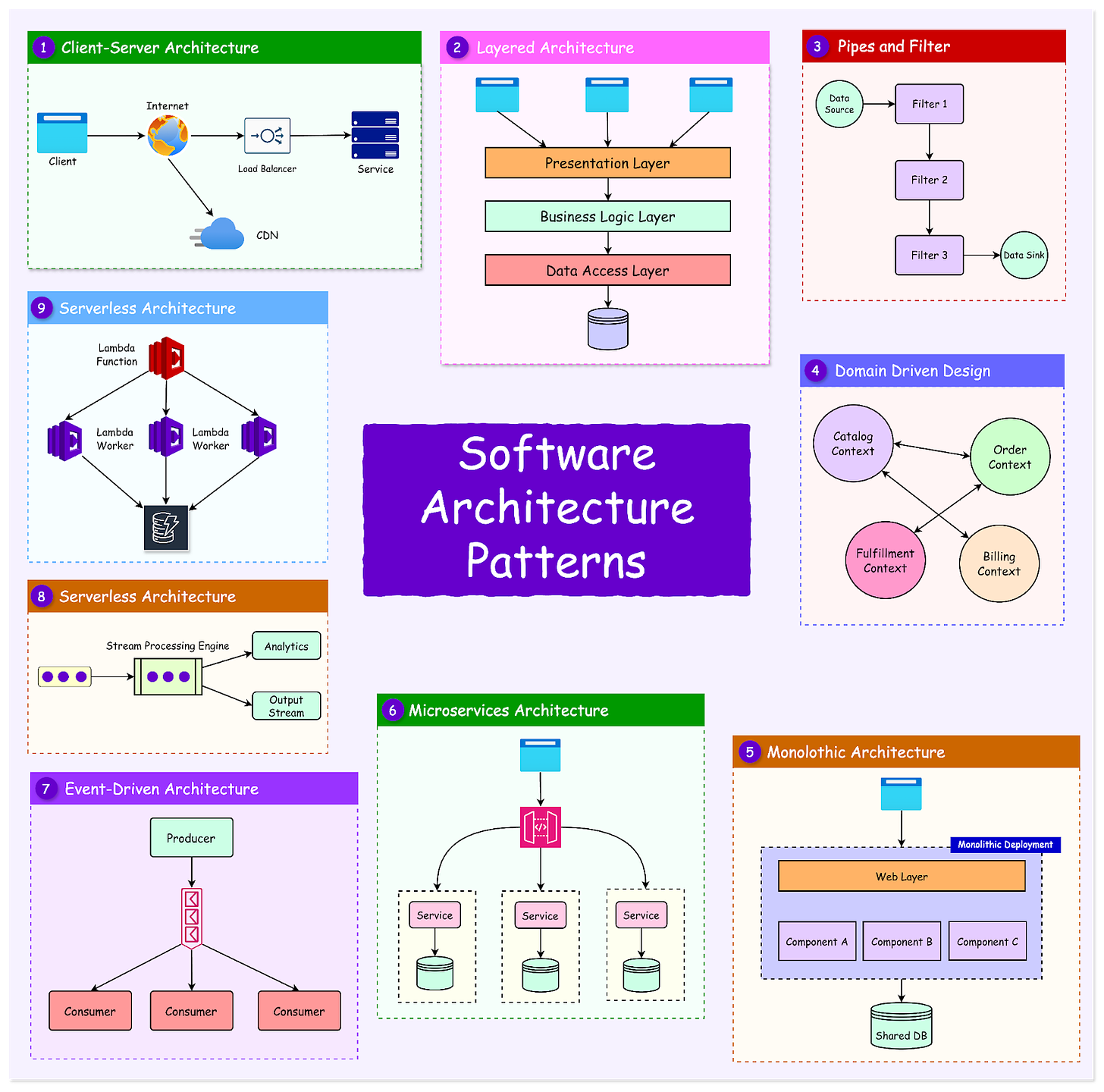Software architects often encounter similar goals and problems repeatedly throughout their careers. These challenges can arise within a single project, across multiple projects within a company, or even throughout an architect's career.
Architectural patterns provide a systematic approach to solving these recurring design issues.
In essence, architectural patterns are reusable approaches to building software that address common design challenges. These patterns capture the core design structures of various systems and software elements, allowing them to be reused across different projects and scenarios.
Some key benefits of knowing about architectural patterns are as follows:
Increased productivity: Instead of reinventing the wheel for each project, architects can rely on established patterns to guide design decisions while saving time and effort. The productivity increase allows teams to focus on the unique aspects of their projects rather than reinventing solutions for recurring issues.
Improved code quality: By following standard patterns, developers can produce higher-quality code that is more maintainable, scalable, and easier to understand.
Better communication: Patterns provide a common language and vocabulary making it easy to discuss and communicate design decisions.
Faster development cycles: With the help of established patterns, development teams can accelerate their development cycles.
In this post, we’ll look at the most popular software architecture patterns used by developers and architects across organizations and systems.
Client-Server Pattern
Client-server architecture is a widely used model for network communication, where a client (user or application) sends requests to a server, and the server responds with the requested data or service. This architecture can be implemented on a single machine or across different machines connected through a network.
See the diagram below for a typical client-server setup.


